|
||||
|
||||
|
||||
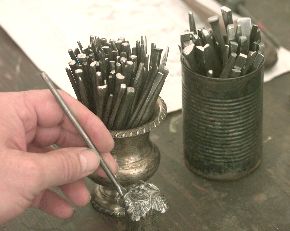
|
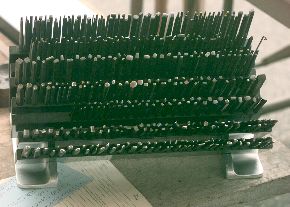 Carving and graving tools by the dozen.
Carving and graving tools by the dozen.
|
|||

|
Testing and fitting the key is as detailed of
work as the rest of this lock. The key must fit snuggly but not bind or hang up.
The opperation should be smooth.
Locks of this style depended on complicated patterns of warding and trickery to avoid picking. But theives of the day could easily pick the simple mechanism which only required getting around the wards. It wasn't until the invention of the lever tumbler in 1788 by Robert Barron of England that locks had real security against picking. Although we commonly think of lever tumbler locks as cheap old fashioned door locks today, bank safe deposit boxes still use them. Good lever tumbler locks are as secure as any good quality lock. Wards (left) are the plates that prevent another key from fitting into the lock. They also make a torturous path to make picking difficult. This lock has a relatively simple but unusual ward design. The "X" shape is silver soldered to a flat plate ward. On high art locks of this type the wards were often intricate patterns built of thin brass plate and the slots sawn in the key with a jewler's saw. This lock also has a rare pin and bushing ward that must rotate with the key. |
|||
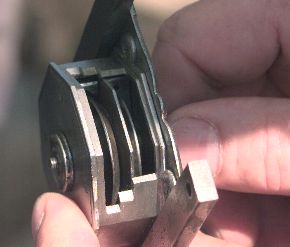
|
||||
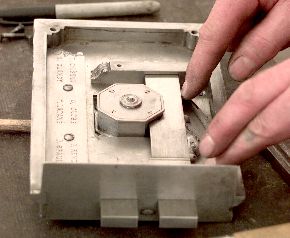
|
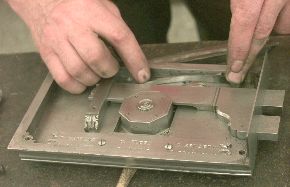 Spring installation.
The friction spring prevents the lock from being jiggled open or picked easily.
Spring installation.
The friction spring prevents the lock from being jiggled open or picked easily.
|
|||
|
See our iForge series on Locks and Keys starting June 19. |
||||
|
|
||||
|
[ iForge | Touchmark Registry | What's New! | Rate Card | Web Rings | 21st Century | AnvilCAM ] |
||||
|
Comments to: Editor at anvilfire.com |
|
|||

